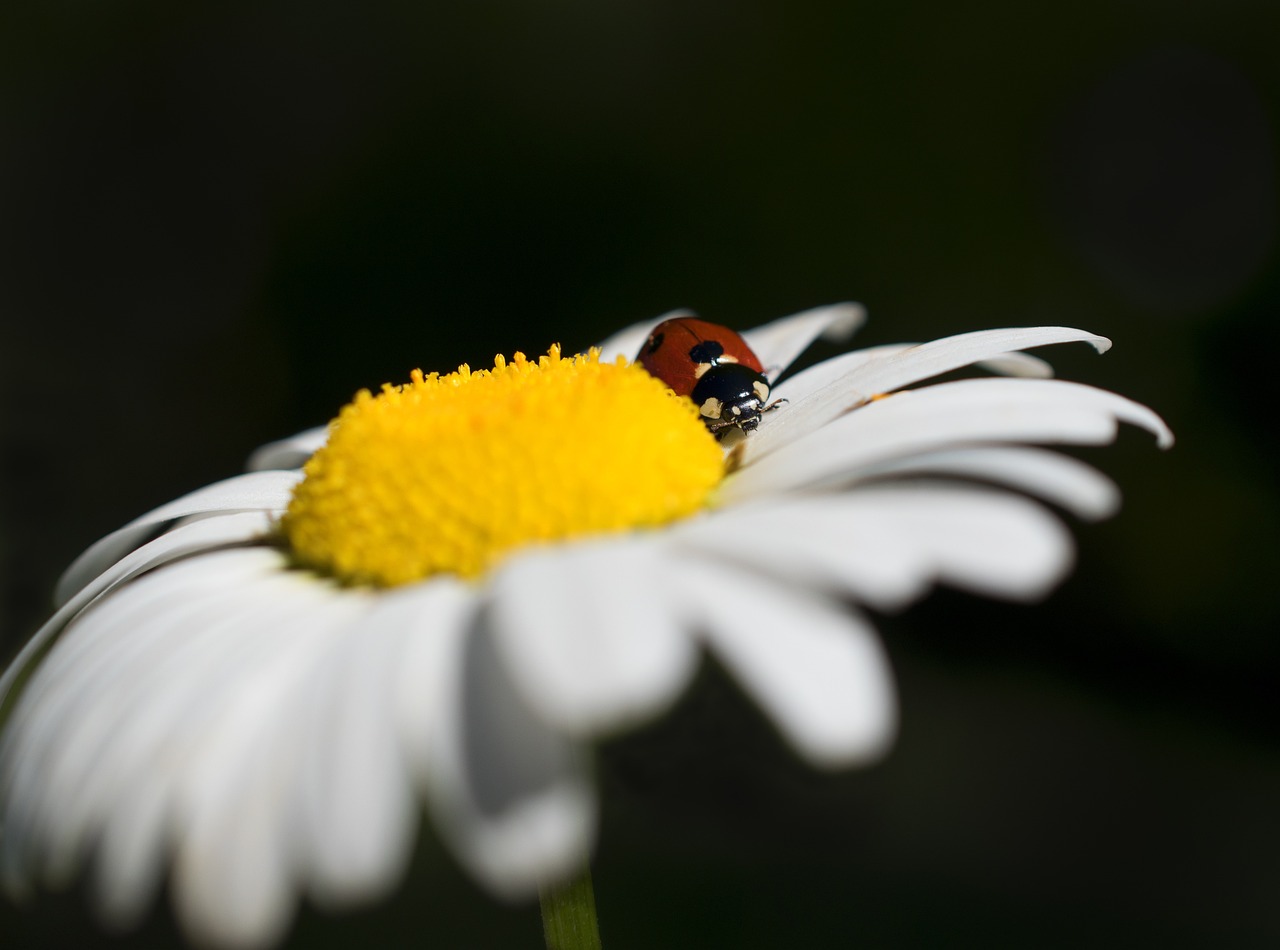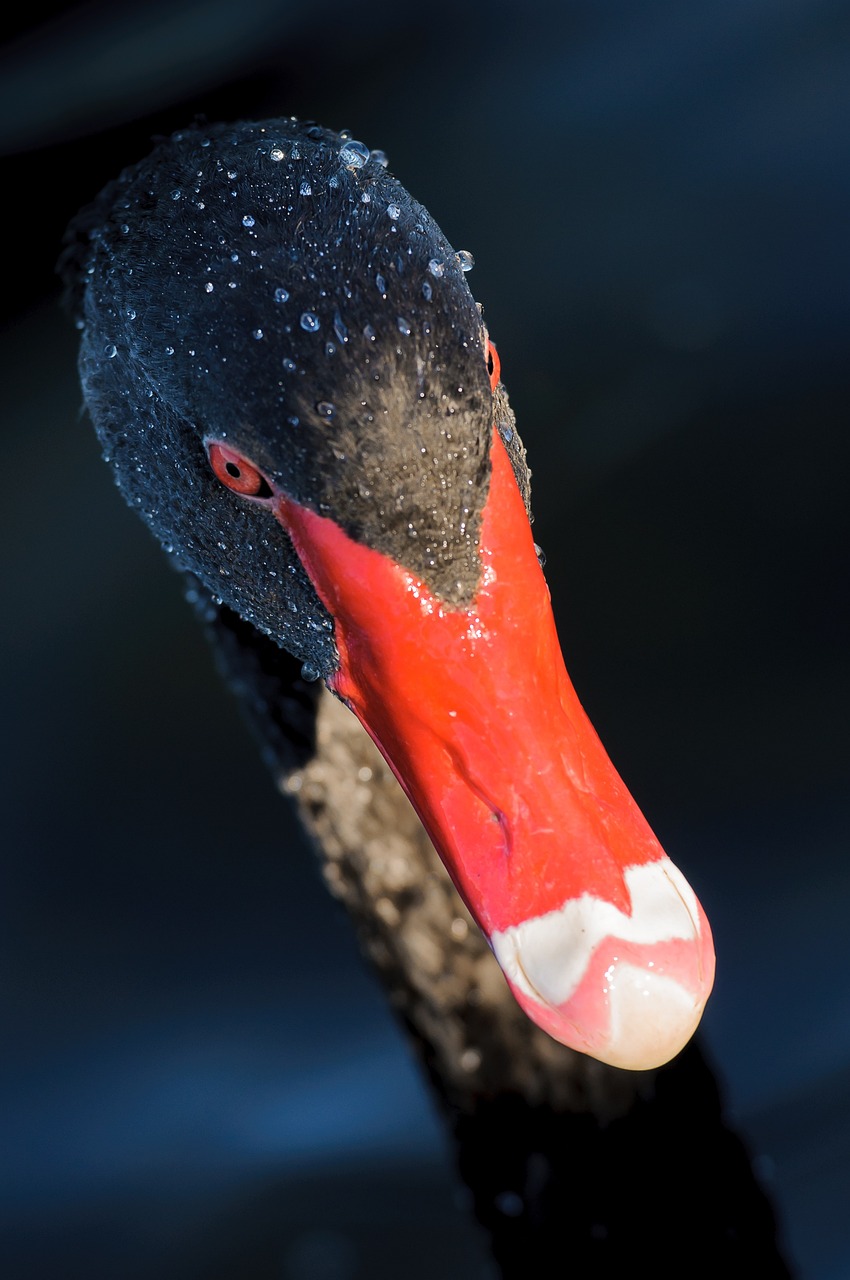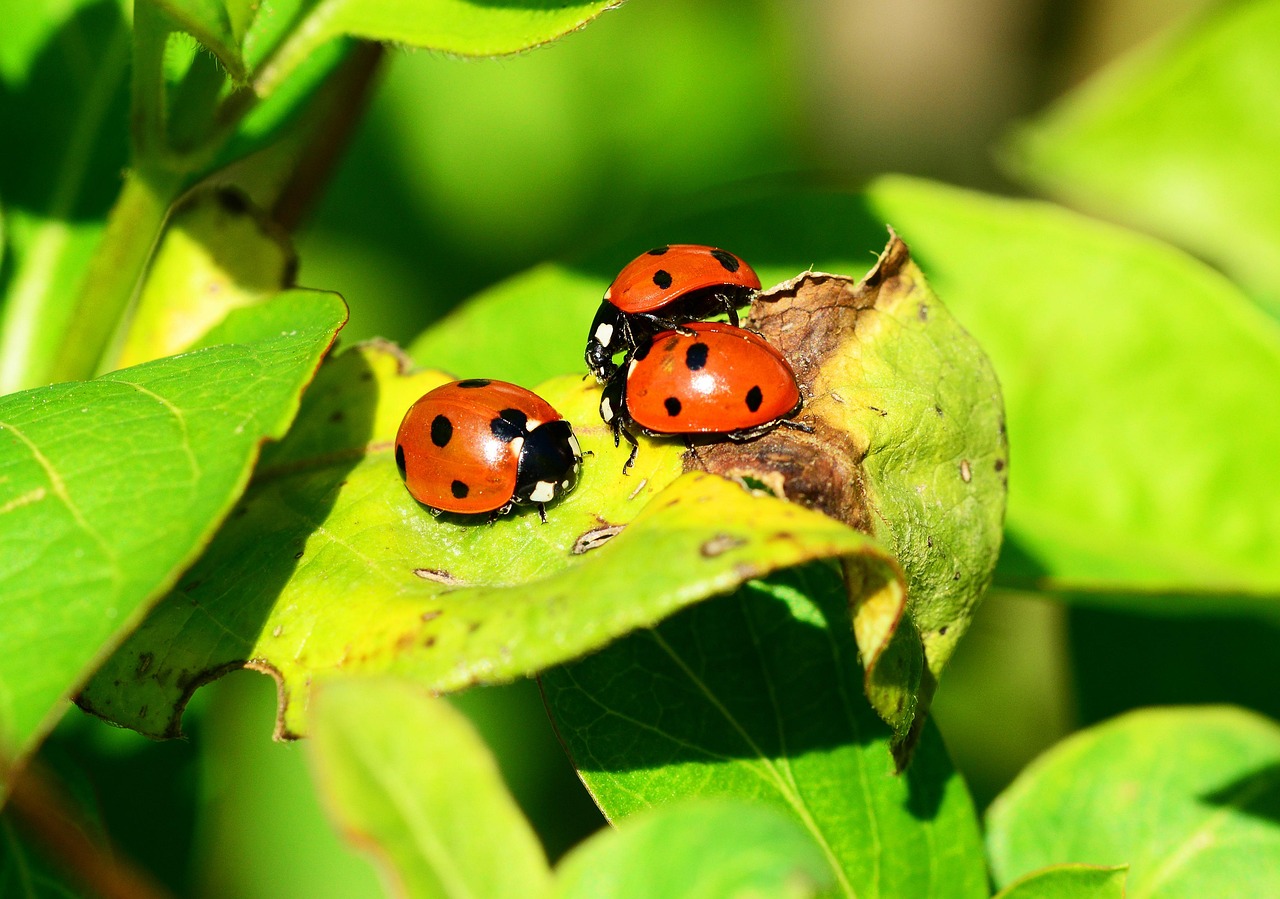Black ladybugs with red spots are a captivating sight in the world of insects. These unique creatures often catch the eye due to their striking color combination and intriguing behavior. Many people have encountered these insects, but few understand their significance and the role they play in our ecosystem. This article delves into the fascinating characteristics, habitat, and behaviors of these ladybugs, revealing what makes them so special.
Ladybugs, commonly known as ladybird beetles, belong to the Coccinellidae family. They are recognized for their dome-shaped bodies, which can be found in various colors and patterns. The black ladybug with red spots is one of the more distinctive varieties, often mistaken for other species due to its unique appearance. Understanding their biology and behavior is essential for appreciating these remarkable insects.

Ladybugs are not just beautiful; they are also beneficial to gardeners and farmers. They serve as natural pest controllers, feeding primarily on aphids and other harmful pests. This ecological role makes them valuable allies in maintaining healthy gardens and crops. The black ladybug with red spots is no exception, showcasing the same predatory instincts as its more common counterparts.
Distinct Features of Black Ladybugs
The black ladybug with red spots has several distinguishing features that set it apart from other ladybug species. These include:
- Coloration: The most striking feature is its glossy black body adorned with bright red or orange spots. This coloration can vary among individuals, making each one unique.
- Size: Adult black ladybugs typically range from 0.8 to 1 cm in length, similar to other ladybug species.
- Shape: They possess a rounded, dome-like structure that is characteristic of many ladybugs.
- Behavior: Known for their gentle demeanor, black ladybugs are less likely to bite humans compared to other insects.
An interesting aspect of their appearance is that the number of spots can differ among individuals. Some may have just a few spots, while others display numerous dots across their backs. This variability adds to their charm and intrigue.
The life cycle of a black ladybug includes four stages: egg, larva, pupa, and adult. Each stage plays a crucial role in their development and contributes to their ecological impact. Below is a brief overview of each stage:
| Life Cycle Stage | Description |
|---|---|
| Egg | Ladybug eggs are small, oval-shaped, and usually yellow or orange. They are laid in clusters on the undersides of leaves. |
| Larva | The larval stage resembles small alligators and can vary in color. Larvae are voracious eaters, primarily consuming aphids. |
| Pupa | This stage is where the larva transforms into an adult ladybug. It undergoes significant changes during this time. |
| Adult | Once they emerge from the pupa, adult ladybugs search for food and mates to continue the cycle. |
Understanding these stages not only highlights the complexity of their life but also emphasizes their importance in controlling pest populations in gardens and agricultural settings.
The black ladybug’s unique look and ecological role make it an important subject of study for entomologists and nature enthusiasts alike. Their presence signals a healthy environment, showcasing the intricate balance of nature that supports diverse species.
Habitat and Distribution of Black Ladybugs
Black ladybugs with red spots are found in various environments, showcasing their adaptability. These insects thrive in areas rich in vegetation, where their primary food source, aphids, is abundant. Understanding their habitat is crucial for conservation efforts and for those looking to attract these beneficial insects to their gardens.
Preferred Habitats
Black ladybugs often inhabit the following environments:
- Gardens: Home gardens provide an ideal location due to the presence of flowering plants and shrubs that attract aphids.
- Meadows: Open fields filled with wildflowers offer a diverse array of food sources for ladybugs.
- Forests: Forested areas provide shelter and food, especially in the understory where aphids thrive on various trees and shrubs.
- Agricultural Fields: Crops such as vegetables and fruits often attract aphids, making these areas a hotspot for ladybug populations.
In addition to these habitats, black ladybugs can be found in urban areas, where gardens and parks serve as refuges. Their ability to adapt to different environments contributes to their widespread presence across various regions.
Behavior and Diet

The behavior of black ladybugs is as fascinating as their appearance. These insects exhibit several behaviors that are essential for their survival and reproduction.
Feeding Habits
As predators, black ladybugs primarily feed on:
- Aphids: The main component of their diet, aphids are small sap-sucking insects that can damage plants.
- Scale Insects: These pests are another source of food, often found on trees and shrubs.
- Mites: Ladybugs will also consume various mite species that infest plants.
Their feeding habits make them invaluable allies in pest management. A single ladybug can eat up to 50 aphids in a day, showcasing their effectiveness in controlling pest populations.
Mating Behavior
Mating rituals among black ladybugs involve various displays. During the mating season, males seek out females through pheromones and visual cues. After successful mating, females lay eggs on the undersides of leaves, ensuring the larvae will have immediate access to food upon hatching.
Defensive Strategies
Like many insects, black ladybugs have developed several strategies to protect themselves from predators:
- Coloration: Their bright red spots against a black background serve as a warning to potential predators about their unpalatability.
- Chemical Defense: When threatened, ladybugs can excrete a foul-smelling fluid from their legs, deterring predators.
- Play Dead: Some ladybugs will play dead when they sense danger, relying on their protective coloration to avoid detection.
These defensive mechanisms contribute to their survival in the wild, allowing them to thrive despite the presence of many natural threats.
The Role of Black Ladybugs in Ecosystems

The ecological impact of black ladybugs extends beyond their role as predators. They contribute significantly to maintaining the balance within ecosystems.
Pest Control
By keeping aphid populations in check, black ladybugs help reduce the need for chemical pesticides in agriculture. This natural pest control leads to healthier crops and promotes sustainable farming practices.
Biodiversity Indicators
The presence of black ladybugs can also indicate the health of an ecosystem. A thriving population often reflects a balanced environment rich in biodiversity. Conservation efforts aimed at protecting these insects are essential for ensuring ecological stability.

Threats to Black Ladybugs
Despite their resilience, black ladybugs with red spots face various threats that can significantly impact their populations. Understanding these threats is crucial for conservation efforts aimed at preserving these beneficial insects.
Habitat Loss
One of the primary threats to black ladybugs is habitat loss. Urbanization and agricultural expansion lead to the destruction of natural habitats where these insects thrive. Key factors include:
- Deforestation: The removal of trees and shrubs eliminates essential breeding and feeding grounds.
- Pesticide Use: Chemical pesticides not only kill harmful pests but also harm beneficial insects like ladybugs.
- Climate Change: Changes in temperature and weather patterns can disrupt their life cycles and food availability.
These factors contribute to declining ladybug populations, making habitat preservation vital for their survival.
Pesticide Exposure
Pesticides pose a significant risk to black ladybugs, as they are not selective in targeting pests. The use of broad-spectrum insecticides can lead to:
- Direct Mortality: Ladybugs may be killed outright when exposed to pesticides, affecting their populations.
- Sublethal Effects: Even low doses of pesticides can impair their reproductive capabilities and foraging behavior, reducing their effectiveness as pest controllers.
The continued reliance on chemical pesticides in agriculture highlights the importance of promoting integrated pest management strategies that protect beneficial insects.
Conservation Efforts for Black Ladybugs
To ensure the survival of black ladybugs, several conservation efforts can be implemented. These initiatives aim to protect their habitats and promote healthier ecosystems.
Creating Ladybug Habitats
Gardening practices designed to provide suitable habitats can help attract black ladybugs. Some effective methods include:
- Plant Diversity: Incorporating a variety of flowering plants can attract aphids and provide food for ladybugs.
- Native Plants: Using native plants supports local ecosystems and provides a natural habitat for ladybugs.
- Avoiding Pesticides: Reducing or eliminating pesticide use in gardens allows ladybug populations to thrive.
By creating environments that cater to the needs of ladybugs, gardeners can contribute to their conservation.
Educational Outreach
Raising awareness about the importance of black ladybugs is essential for fostering a culture of conservation. Educational initiatives can include:
- Community Workshops: Hosting workshops that teach sustainable gardening practices can empower individuals to create ladybug-friendly environments.
- School Programs: Integrating information about ladybugs and their ecological roles into school curriculums can inspire future generations.
- Citizen Science Projects: Encouraging the public to participate in monitoring ladybug populations can provide valuable data for researchers.
These outreach efforts can enhance public understanding of ladybugs and their contributions to healthy ecosystems.
The Cultural Significance of Ladybugs
Black ladybugs have also made their mark in various cultures around the world. Their distinctive appearance and beneficial nature have led to a rich tapestry of folklore and symbolism.
Folklore and Myths
Many cultures regard ladybugs as symbols of good luck and protection. Some common beliefs include:
- Good Fortune: In several cultures, encountering a ladybug is considered a sign of good luck, often associated with blessings in love and life.
- Agricultural Protectors: Farmers have historically viewed ladybugs as guardians of crops, believing their presence ensures a bountiful harvest.
- Spiritual Symbols: In some traditions, ladybugs represent transformation and renewal, reflecting their life cycle stages.
This cultural significance adds another layer to the appreciation of black ladybugs beyond their ecological role, reminding us of the interconnectedness between nature and human beliefs.
Conservation and the Future of Black Ladybugs
The future of black ladybugs with red spots, like many other species, is closely tied to environmental changes and human activities. Conservation efforts are essential for maintaining their populations and ensuring they can continue to thrive in their natural habitats. It is crucial to consider how individual actions can contribute to the overall health of ecosystems.
Community Involvement in Conservation
Local communities play a significant role in the conservation of black ladybugs. Engaging community members can foster a sense of responsibility and encourage personal action towards environmental sustainability. Some effective strategies include:
- Community Gardens: Establishing community gardens focused on organic practices can create habitats for ladybugs and other beneficial insects.
- Native Plant Initiatives: Promoting the planting of native species helps support local wildlife, including ladybugs, by providing food and shelter.
- Awareness Campaigns: Organizing campaigns to educate the public about the importance of ladybugs can inspire collective action towards their conservation.
By involving communities in conservation efforts, we can create a collective impact that supports not only black ladybugs but also the broader ecosystem.
Research and Monitoring
Ongoing research into black ladybug populations is crucial for understanding their needs and threats. Scientific studies can help identify trends and provide valuable data for conservation strategies. Citizen science programs can also play a role in monitoring populations, allowing individuals to contribute to scientific knowledge.
- Population Surveys: Conducting surveys can help track changes in ladybug populations over time, informing conservation efforts.
- Behavioral Studies: Researching their behavior can provide insights into how they adapt to environmental changes and threats.
- Collaboration with Universities: Partnering with academic institutions can enhance research capabilities and foster innovation in conservation methods.
Collaborative research efforts can lead to more effective strategies for preserving black ladybug populations and their habitats.
Final Thoughts
The black ladybug with red spots is more than just an intriguing insect; it is a vital component of our ecosystem. Through its role as a natural pest controller, it contributes to healthier gardens and agricultural systems. The cultural significance attributed to ladybugs highlights their connection to human beliefs and experiences, further emphasizing the need for their conservation.
As we face challenges such as habitat loss, pesticide use, and climate change, it is imperative that we take action to protect these beneficial insects. By creating supportive environments, engaging in community conservation efforts, and promoting awareness, we can ensure that black ladybugs continue to thrive for generations to come.
Ultimately, our relationship with nature is intertwined with the fate of species like the black ladybug. Appreciating their unique beauty and understanding their ecological importance can inspire us to advocate for their protection and the health of our environment as a whole.
